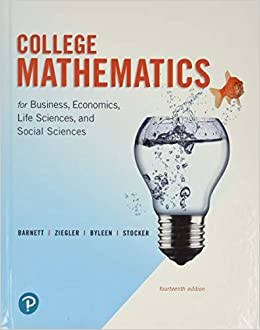Question
Part 4: Financing RetirementProf. Business has a self-managed retirement plan through her University and would like toretire in 12 years and wonders if her current
Part 4: Financing RetirementProf. Business has a self-managed retirement plan through her University and would like toretire in 12 years and wonders if her current and future planned savings will provide adequatefuture retirement income. Heres her information and goals. Prof. Business wants a 25-year retirement annuity that begins 12 years from today withan equal annual payment equal to $95,000 today inflated at 2.5% annually over 12 years.Her first retirement annuity payment would occur 12 years from today. She realizes herpurchasing power will decrease over time during retirement. Prof. Business currently has $500,000 in her University retirement account. She expectsthese savings and any future deposits into her University and any other retirement accountwill earn 8% compounded annually. Also, she expects to earn this same 8% annual returnafter she retires.
Answer the following questions to help Prof. Business finalize her retirement planning.
1.What is Prof. Business desired annual retirement income?
2. How much will Prof. Business need 12 years from today to fund her desired retirementannuity?
3. In addition to the $500,000 balance today, Prof. Business will fund her future retirementgoal from question 2 by making 12 annual equal deposits at 8% compounded annuallyinto her retirement accounts starting a year from today (the last deposit will be madewhen Prof. Business retires). How large does this annual deposit need to be in additionto the initial $500,000 invested in Prof. Business retirement fund?
4. This annual figure from #3 is actually less than the Prof.s $15,000 current annualcontribution, which makes her feel a little less anxious about her future plannedretirement. Also, Prof. Business annual retirement account contribution is based on apercentage of her salary and will increase as her salary increases. However, Prof.Business is worried about her purchasing power eroding during retirement. She wouldlike her first retirement withdrawal to be equal to the amount you found in #1, and thenincrease each successive retirement withdrawal by 2.5% annually over the remaining 24withdrawals. How much will Prof. Business need now at retirement given Prof.Business 8% expected return?
5. In addition to the $500,000 balance today, Prof. Business will fund her adjusted futureretirement goal from question 4 by making 12 annual equal deposits at 8% compoundedannually into her retirement accounts starting a year from today (the last deposit will bemade when Prof. Business retires). How large does this annual deposit need to be inaddition to the initial $500,000 invested in Prof. Business retirement fund?
6. Wow, the annual deposit required to fund the growing retirement annuity in question 5gives Prof. Business major sticker shock. However, she may be willing to accept a lowerannual retirement annuity than described in question 4 that loses purchasing powerover time but that is hopefully higher than the retirement annuity in questions 1 and 2.Lets account for the fact that her and the Universitys contributions to Prof. BusinessUniversity retirement plan are based on a certain percentage of her salary and willincrease as her salary increases. Based on this formula, her first upcoming end of theyear deposit will be $14,500 and lets assume that her annual deposit and salary willgrow at a 2.5% annual rate over the remaining 11 years (12 total deposits) to Prof.Business retirement. Also, she plans to contribute an additional $6,000 at the end ofeach year until she retires. This will make her first year total deposit $20,500, but onlythe $14,500 part of this deposit will increase 2.5% annually, the $6000 part of thedeposit will remain fixed each year under current laws. These deposits are in additionto the $500,000 she currently has today in the University retirement plan. Answer thefollowing based on these assumptions.a) How much money will Prof. Business have in her retirement account immediatelyafter her last deposit 12 years from today?b) What would be the equal annual payment from her 25-year retirement annuitywhose first payment occurs exactly 12 years from today?
Step by Step Solution
There are 3 Steps involved in it
Step: 1

Get Instant Access to Expert-Tailored Solutions
See step-by-step solutions with expert insights and AI powered tools for academic success
Step: 2

Step: 3

Ace Your Homework with AI
Get the answers you need in no time with our AI-driven, step-by-step assistance
Get Started


